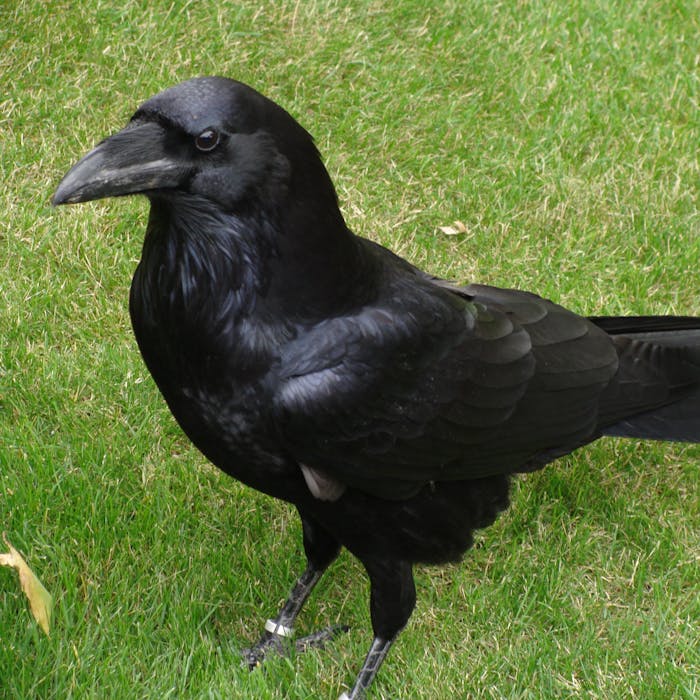
The Raven - dark in look and nature
The common raven is the largest member of the crow family. This sombre and intelligent bird, with its deep croak and dark plumage is often seen as being associated with death - more specifically with an aftermath of a bloody or significant battle - and has long featured in northern European mythology, stories and works of art.
Ravens are completely black omnivorous birds. They can mostly be seen in upland areas of the west and north of Britain, though they have been expanding east and their range now includes the entire south coast of England. They like cliffs, mountainsides and tall trees to breed in. They do well around human habitations including farms, rural settlements and isolated houses..
Ravens have few natural predators and can be long-lived. The famed examples at the Tower of London have lived for more than 40 years, and represent continuity and permanence. Lifespans in the wild are considerably shorter at typically 10 to 15 years. Raven pairs usually stay together for life and nest in the same location every year.
Meat and carrion is part of a raven's diet. This has brought them into conflict with farmers and other humans over the centuries. In Britain, as in many cultures, the association with death and ill omen is probably due in part to the birds feeding upon dead soldiers on battlefields.
A legend developed that England would not fall to a foreign invader as long as there were ravens at the Tower of London. Although this is often thought to be an ancient belief, the official Tower of London historian, Geoff Parnell, believes that this is actually a romantic Victorian invention.
Ravens are thought to be highly intelligent and capable of deception. They also indulge in play and have been seen to make their own toys by breaking off twigs to play with.
Surprisingly, the word "ravenous" is not related to the name of this legendary bird.
Further reading
Links to external websites are not maintained by Bite Sized Britain. They are provided to give users access to additional information. Bite Sized Britain is not responsible for the content of these external websites.
